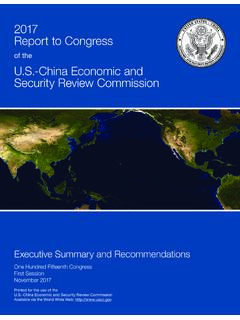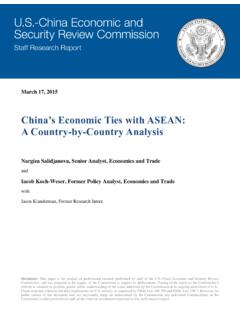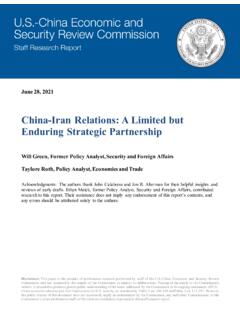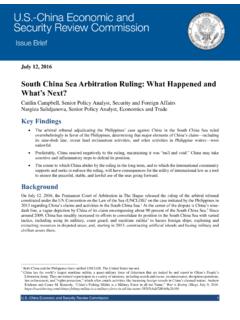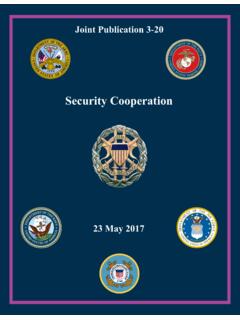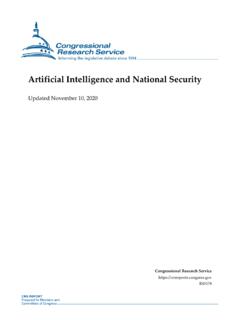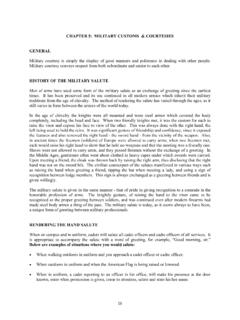Transcription of China-Russia Military-to-Military Relations: Moving Toward ...
1 March 20, 2017 Disclaimer: This paper is the product of professional research performed by staff of the Economic and security Review Commission, and was prepared at the request of the Commission to support its deliberations. Posting of the report to the Commission s website is intended to promote greater public understanding of the issues addressed by the Commission in its ongoing assessment of economic relations and their implications for security , as mandated by Public Law 106-398 and Public Law 113-291. However, the public release of this document does not necessarily imply an endorsement by the Commission, any individual Commissioner, or the Commission s other professional staff, of the views or conclusions expressed in this staff research report.
2 Ethan Meick, Policy Analyst, security and Foreign Affairs Acknowledgements: The author thanks Yu Bin, Paul Schwartz, and Richard Weitz for their helpful insights and reviews of early drafts. Their assistance does not necessarily imply any endorsement of this report s contents, and any errors should be attributed solely to the author. China-Russia Military-to-Military Relations: Moving Toward a Higher Level of Cooperation Economic and security Review Commission Table of Contents Executive Background ..4 Overview of military Engagement ..5 military Exercises ..6 Joint Sea-2016.
3 8 Peace Mission-2016 ..10 military -Technical Cooperation ..12 High-Level Military-to-Military Contacts ..17 Implications for the United States and the Asia Pacific ..20 Conclusion ..23 Appendix 1: China-Russia military Exercises, 2003 2016 ..24 Economic and security Review Commission 3 Executive Summary Since the normalization of relations between China and the Soviet Union in 1989, Beijing and Moscow have prioritized defense and security ties, which are now among the most important components of the overall relationship. This emphasis is reflected in their 1996 strategic partnership of coordination, which remains the foundation for high-level cooperation.
4 In the decade following the initiation of the strategic partnership, the two sides gradually resolved tensions in the defense relationship culminating with the settling of all border disputes while China steadily increased arms imports from Russia, eventually becoming Russia s leading destination for arms exports. Following the peak of Russian arms sales to China in 2005 2006, defense ties entered a cooling-off period, due in part to a decline in arms sales and a divergence in the respective security priorities of the two countries. During this period, Moscow appeared increasingly suspicious of Chinese reverse-engineering of Russian weapons systems and hesitated to provide its most advanced systems to China.
5 Since 2012, however, closer defense ties have been a key driver of warming China-Russia relations. Indeed, China and Russia appear to be Moving Toward a higher level of defense cooperation. The three main areas of the bilateral defense relationship military exercises, military -technical cooperation,* and high-level Military-to-Military contacts show increases in the level and quality of engagement, collectively reflecting closer defense ties. Nevertheless, policy differences and mutual distrust likely will prevent a more comprehensive alliance-like security relationship from taking shape, at least in the near term.
6 It is doubtful, for example, the two countries would reach any defense agreement compelling either side to respond militarily in support of the other in a conflict scenario involving a third party. Still, recent developments in China-Russia Military-to-Military relations have important implications for security interests and the Asia Pacific. Russia s sale of Su-35 fighter jets to China (deliveries of which began in December 2016) will help the People s Liberation Army (PLA) contest air superiority, provide China with technology that could help accelerate the development of its own advanced fighters, and serve as a valuable training and learning platform before China fields its next-generation aircraft.
7 The Russian sale of the S-400 surface-to-air missile (SAM) defense system to China (with deliveries starting in 2018) should help China improve capital air defense and could assist the PLA in achieving increased air superiority over Taiwan if deployed to the Eastern Theater Command (bordering the Taiwan Strait). This SAM system would pose a challenge for Taiwan s air assets in a potential cross-Strait conflict, the air assets of allies or partners in a South China Sea or East China Sea contingency, and aircraft, should the United States decide to become involved in such potential conflicts.
8 The S-400 also could be used to help enforce China s East China Sea Air Defense Identification Zone (ADIZ). The increased complexity and focus on joint operations of military exercises between the PLA and Russian Armed Forces help provide both sides with valuable experience in pursuing their defense objectives. The exercises are particularly useful for the PLA which lacks recent combat experience because they provide much-needed insights and knowledge that help China pursue its military modernization goals. The recently expanded geographic scope of Sino-Russian military exercises, along with a new focus on missile defense, reflects increasingly aligned security interests and suggests the two countries are both signaling their respective support for the other s security priorities.
9 Greater alignment between the two countries in the security realm could pose challenges to the United States, its allies, and partners. * military -technical cooperation consists of a wide range of defense industry engagement, including arms sales, joint research and development, weapons licensing agreements, technology transfer, sharing of technical knowledge, and maintenance of weapons systems. An ADIZ is a publicly declared area, established in international airspace adjacent to a state s national airspace, in which the state requires civil aircraft to provide aircraft identifiers and location.
10 Its purpose is to allow a state the time and space to identify the nature of approaching aircraft before those aircraft enter national airspace in order to prepare defensive measures if necessary. An ADIZ does not have any legal bearing on sovereignty claims. Kimberly Hsu, Air Defense Identification Zone Intended to Provide China Greater Flexibility to Enforce East China Sea Claims, Economic and security Review Commission, January 14, 2014, 1. Economic and security Review Commission 4 Background After decades of largely nonexistent defense ties,* the implementation of the and European arms embargos on China after the 1989 Tiananmen Square Massacre and the fall of the Soviet Union in December 1991 prompted renewed cooperation between China and Russia.
